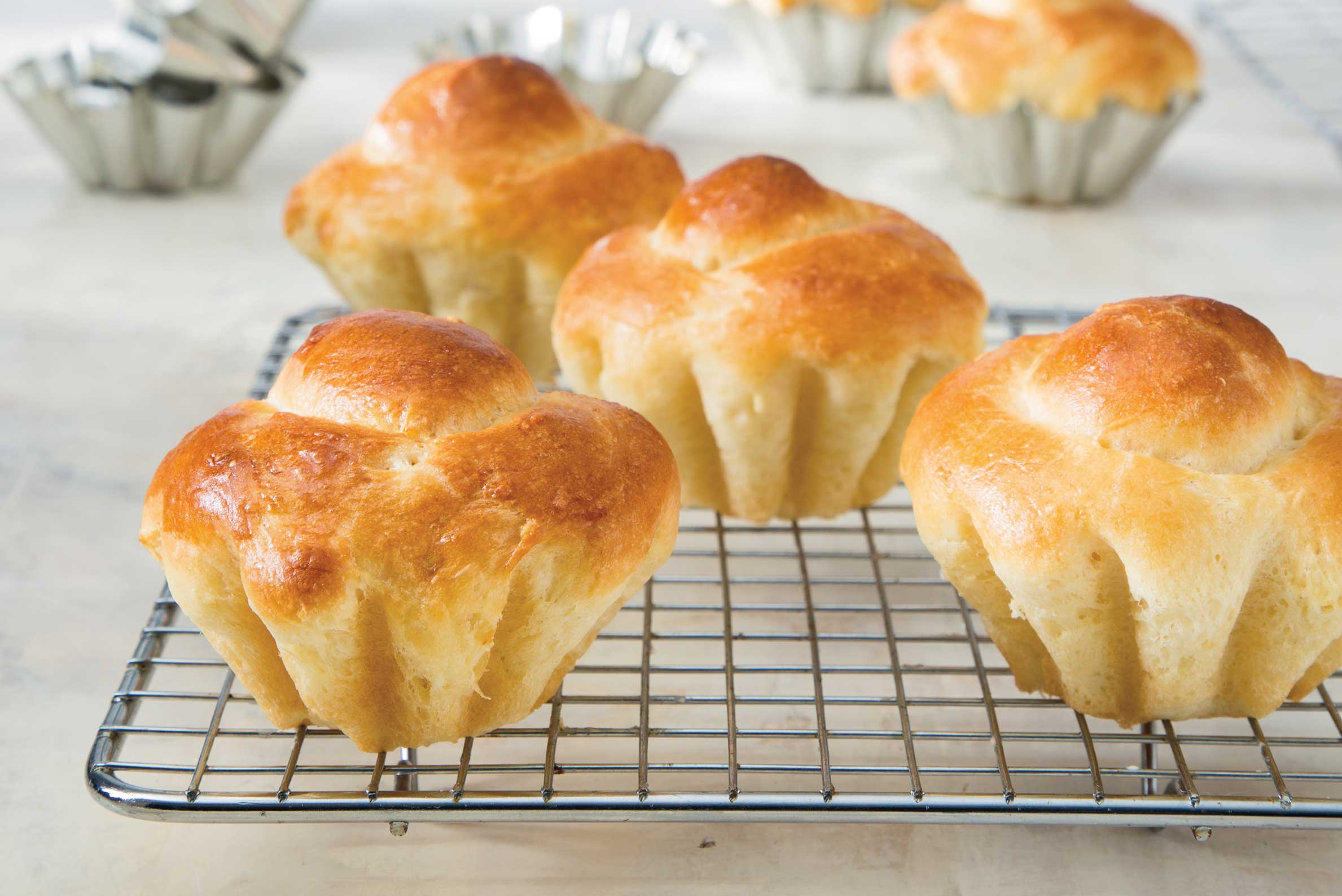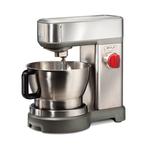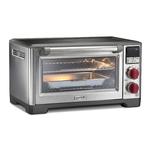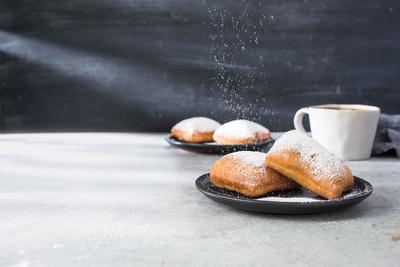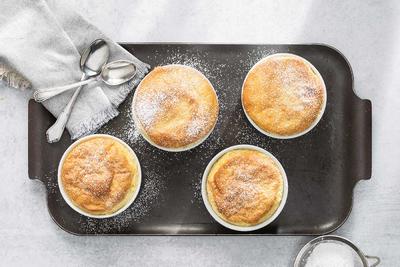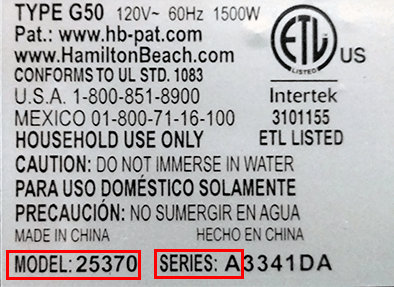Preparation Method
- In a small bowl, stir together yeast, milk, ¼ cup (60 milliliters) warm water, and ½ teaspoon (2 grams) granulated sugar. Stirring occasionally, let stand until the yeast is dissolved and foamy, 6–8 minutes.
- In the mixing bowl of the stand mixer fitted with the flat beater attachment, beat the yeast mixture with flour and salt on low (1–2) speed until all the dry ingredients are mixed with the liquid to form large lumps. The mixture will look rough and shaggy.
- Remove the flat beater attachment and insert the dough hook. Scraping down the bowl as needed, add 2 eggs one at a time, beating on low (1–2) speed after each addition until a cohesive dough forms. Increase the speed to medium (5–6), add remaining ¼ cup (50 grams) granulated sugar, and beat until blended.
- Reduce the speed to low (1–2) and add the butter one tablespoon at a time. Make sure each addition of butter is well blended before adding another tablespoon, 5–6 minutes total.
- Increase the speed to medium-high (7–8) and beat until the dough pulls away from the sides of the bowl and climbs the dough hook, 5–6 minutes. During mixing, the dough will look very sticky. Resist adding more flour. At the end of the kneading time, the dough will look very smooth and silky.
- Grease a large mixing bowl and scrape the dough into the bowl. Cover the bowl with plastic wrap and let the dough rise in a warm, draft-free place until tripled in size, about 1½ hours. Punch the dough down and reshape into a ball. Spray a sheet of plastic wrap with nonstick spray and cover the dough. Refrigerate the dough at least 4 hours or overnight.
- Butter 12 (3-inch [8-centimeter]) brioche molds or a 12-cup muffin pan. If using brioche molds, place on a baking sheet.
- Transfer the chilled dough to a floured cutting board. Cut the dough into 12 even pieces. Lightly flour the cutting board and roll each piece of dough into 2-inch (5-centimeter) balls.
- To shape the dough into brioche à tête, roll each dough ball into a log about 3½-inches (9-centimeters) long. About 1 inch (3 centimeters) from one end of the log, make a crosswise indentation with the side of your hand, making sure not to cut it all the way through. The cylinder will now look like a head, neck, and body. Using a sharp knife, cut a 1-inch (3-centimeter) slit lengthwise in the center of the body section of the cylinder. Using your fingers, open the slit and shape that end into a ring. Fold the cylinder at the neck, bringing the head section up through the opening in the ring. Place the brioche à tête rolls in the molds or muffin pan. Place in a warm, draft-free place to rise. Let the rolls rise until doubled in size, about 1 hour.
- Preheat he oven to 450°F (230°C) with a rack set in the lowest position. Place a baking stone on the rack. Let heat for at least 30 minutes. When the rolls are ready to bake, reduce the temperature of the oven to 375°F (190°C). In a small bowl, whisk 1 teaspoon (5 milliliters) water and remaining egg. Brush the egg wash lightly over the top of each roll.
- Bake until golden brown and the temperature of the bread reaches 190–195°F (88–90°C), 18–20 minutes. Remove the rolls from the pan and let cool on a wire rack.
Pro Tip
The brioche dough can also be made into a loaf. Shape the dough into eight balls and place in a 4½-by-8½-inch (11-by-22-centimeter) loaf pan. Let rise for one hour. Bake at 375°F (190°C) for 25–30 minutes. Tent with aluminum foil if the bread starts to brown too quickly.


